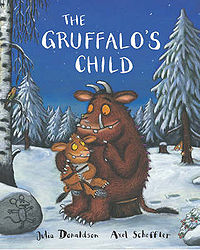POINTS: 3 out of 10.
Bechdel: 0 points
Variety of characters: 0 points
Good story: 2 points
Discretionary ideological points: 1 point


I am so excited to have finally gotten round to a Seuss. A very classic Seuss at that! And one which, alas, fails dismally. This is another good example of a really great book that has a lot going for it that still manages to fail the criteria we’ve set up, which proves my claim that this is not a perfect system, and is really more about being aware of trends than about the value of particular books. Any system is going to be flawed, and this one is no exception. Still, onwards!
I debated the Bechdel pass with myself for a while, but I think technically I can’t give it. There are two named characters (though one is, admittedly, “Mother”), and Mother does direct dialogue at her kids, one of whom is Sally, but Sally never responds, and I think, in general, the interaction fails the spirit of the Bechdel. It was too borderline, so I couldn’t give it the point.
I also honestly hunted for some good ideology points I could give it, but actually, by the standards of the system I’ve set up here, this book is not great. There are some clear consent violations (the Cat continues to tease and balance the Fish after the Fish has explicitly asked him to stop), which I find hard to forgive given how much effort I put into teaching my kid that when someone says stop you should stop.
The Cat does clean up his mess in the end, but there is a lot of boundary crossing in the story, to the point that I think “clean up your mess” as a message is a bit weak-sauce for this tale.
I am proud that when we got to the end of the book, and reached the question. “What would you do if your mother asked you?”, my son replied unequivocally that he would tell me. YAY! But despite the fact that there is a lot going on here that’s ideologically troubling, it is still, obviously, great fun to read, and a classic of kiddielit for a reason!
In truth, I could probably write a very long convoluted essay defending The Cat in the Hat, but I’m going to try and keep it simple for our purposes here. You see, the thing is that Seuss does something very important which I think is vital in children’s literature, and that is dealing with transgression.
For those of you who don’t know, I wrote my masters thesis on trickster children’s texts, so this is something of a pet topic for me, and I think this book falls neatly into this category – which is to say the Cat is a trickster. The book is dealing with this idea of transgressing – of breaking adult rules – and I think that this is something that needs to be present in children’s books in much the way every pantheon needs a trickster and every court needs a jester – because we humans need a safety valve.
So yeah, ideologically it’s a bit iffy, but that’s sort of the point. It’s skating the boundaries of acceptability and doing it well, which is no easy feat. It’s a trickster text, poking at the edges of adult sensibilities and letting kids in on the chaotic tricksterism of the Cat’s world.
Do you buy it? I don’t know if I’ve sold it well enough here. 😉 But let me know what you think. Are you a fan of the good Dr? Do you love the Cat? Or do you find yourself on the side of the Fish?


